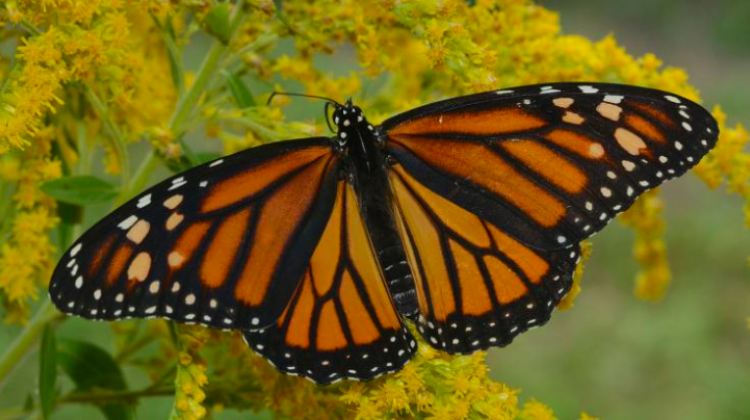North American butterfly - an unexpected guest in Białystok
 Credit: Marcin Sielezniew (UwB), Izabela Dziekańska, Emilia Brzosko (UwB)
Credit: Marcin Sielezniew (UwB), Izabela Dziekańska, Emilia Brzosko (UwB)
On a cluster of hemp-agrimony in front of one of the apartment buildings in Białystok, an employee of the University of Bialystok found one of the world`s most famous butterflies - the monarch. Researchers want to find out where the butterfly native to North America came from.
The University of Bialystok presents the insect`s story in a press release.
Monarch (Danaus plexippus) is a butterfly from the Nymphalidae family. Every autumn, millions of these insects leave the northern regions of the US and Canada and travel 4,000 km to spend winter in the warm mountains of Mexico or California. But the question is, how did the monarch end up in Poland?
"We know that sometimes individual butterflies are found in the British Isles, carried there by winds over the Atlantic. In addition, the monarch has been brought to southern Spain, where its settled populations occur, as they do in the Canary Islands" - says Dr. Marcin Sielezniew, quoted in the press release. "But Białystok is located at the opposite end of the European Union, and it is unlikely that are dealing with an unusual migration. It is difficult to imagine for such a large and distinctive butterfly to be observed in Podlasie, but not somewhere else in Poland or on the way to Poland. In addition, the butterfly did not bear any signs of wing wear" - he describes.
According to the biologist from the University of Bialystok, the most probable hypothesis is that the monarch comes from a rearing, from which it escaped or was deliberately released. The observations of Prof. Emilia Brzosko (also from the Institute of Biology of the University of Bialystok) appear to confirm this theory. On the next day she also photographed a very fresh looking individual in the backyard garden, and on Monday and Tuesday (30 and 31 July) the same or another specimen appeared again in front of her home.
Both observations were made within a few hundred meters distance. But it certainly was not the same monarch, because Dr. Marcin Sielezniew caught the specimen he had spotted in a special butterfly net, and took it home. There, together with Izabela Dziekańska, also a butterfly enthusiast, he organized a photo session in goldenrod. In Poland this species is invasive, but in the homeland of the monarchs it belongs to melliferous plants.
For now, the monarch from Bialystok is kept in the fridge (and fed from time to time). Under the influence of low temperature, it has entered a dormant state similar to the natural one that occurs in cold weather.
"I need to determine if we can simply release it" - explains Dr. Marcin Sielezniew. "In Poland the monarch is not covered by species protection or subject to the Washington convention, but it is not our native species. We may also collect samples from its wings for genetic research" - he announces
This could help the biologists learn more about the origin of the insect.
It is likely that the monarchs have shown themselves not only to the employees of the Institute of Biology of the University of Bialystok and there are more observations. "If anyone was also lucky enough to encounter this extraordinary butterfly in Białystok, or has an idea for solving the mystery of the monarchs` origin, please contact us" - the researchers invite.
Information can be sent by e-mail to marcins@uwb.edu.pl.
PAP - Science in Poland
ekr/ agt/ kap/
tr. RL
Przed dodaniem komentarza prosimy o zapoznanie z Regulaminem forum serwisu Nauka w Polsce.















